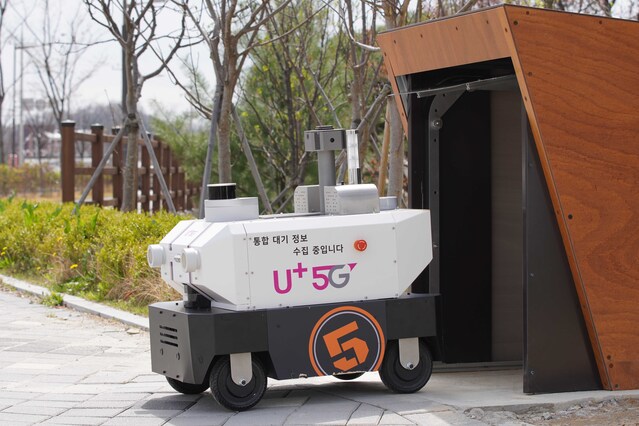Input 2021-04-04 09:03 | Revision 2021-04-04 09:03

LG U+ announced on the 4th that it is managing the atmospheric environment in Jeonju in real time through autonomous driving robots connected through a 5G network.
Earlier, LG Uplus decided to introduce a self-driving robot that can measure air quality and monitor pollutant emissions 24 hours after signing a business agreement with Jeonju City in September last year. Six autonomous robots and 20 fixed-type atmospheric detectors were put into residential areas such as the industrial complex in Palbok-dong, Jeonju-si, the chronic district, and the innovative city.
The’Environment Management Robot’, which runs autonomously around Jeonju with AI, collects atmospheric information in real time while autonomously driving a course of about 1km, and quickly transmits and analyzes environmental information acquired during unmanned patrols to the 5G network.
The environmental management robot produced with the’tool space’ delivers atmospheric information to the Gwangju MEC center through a 5G network. Through the 5G network of ultra-high speed and ultra-low latency, it is seamlessly connected and can move safely even in an emergency situation that requires remote control.
In the Gwangju Mobile Edge Computing (MEC) center, which is connected to the 5G network and a dedicated line, an integrated control operation server, robot control, agency control, video control, and AI analysis server are in operation. Through MEC, the delay time of 30~40ms in LTE can be reduced to a single digit. The data processed by the Gwangju MEC center is transferred to the control center in Jeonju through a dedicated line, and in case of an emergency, the control center can give the robot a control command.
The substances that environmental management robots collect in real time from the atmosphere are ▲ fine dust (PM2.5) ▲ ultrafine dust (PM10) ▲ carbon monoxide (CO) ▲ nitrogen dioxide (NO2) ▲ sulfur dioxide (SO2) ▲ hydrogen sulfide (H2S) ▲ ammonia ( NH3) ▲ These are volatile organic compounds (VOC). Through this, it is possible to easily identify the origin of odors as well as phenomena that cause spring air quality problems such as yellow dust by grasping the levels of these substances in the atmosphere.
Each patrol by the environmental management robot takes about 30 minutes, and the patrols are made from 9 am to 6 pm every day.
Suh Jae-yong, manager of LG U+’s smart infrastructure business, said, “For two years since the world’s first 5G commercialization, we have been striving to discover B2B and B2G cases that promote the advancement of industry and public sectors.” He said, “We will build a cooperative relationship with our domestic and foreign partners to create a 5G ecosystem.”
Press releases and article reports [email protected]
[자유민주·시장경제의 파수꾼 – 뉴데일리 newdaily.co.kr]
Copyrights ⓒ 2005 New Daily News-Unauthorized reproduction, redistribution prohibited
Vivid
Headline news Meet the main news at this time.
